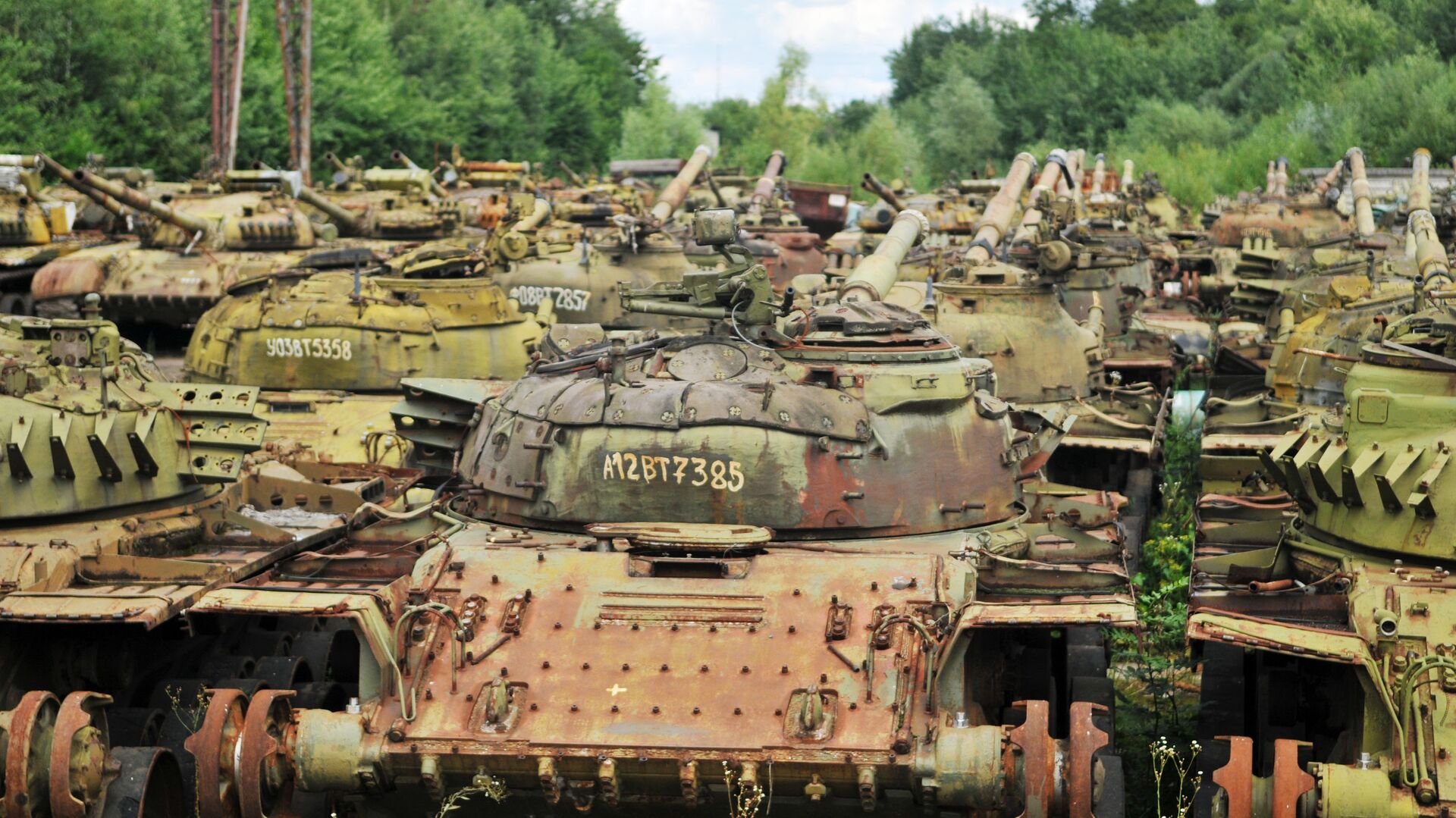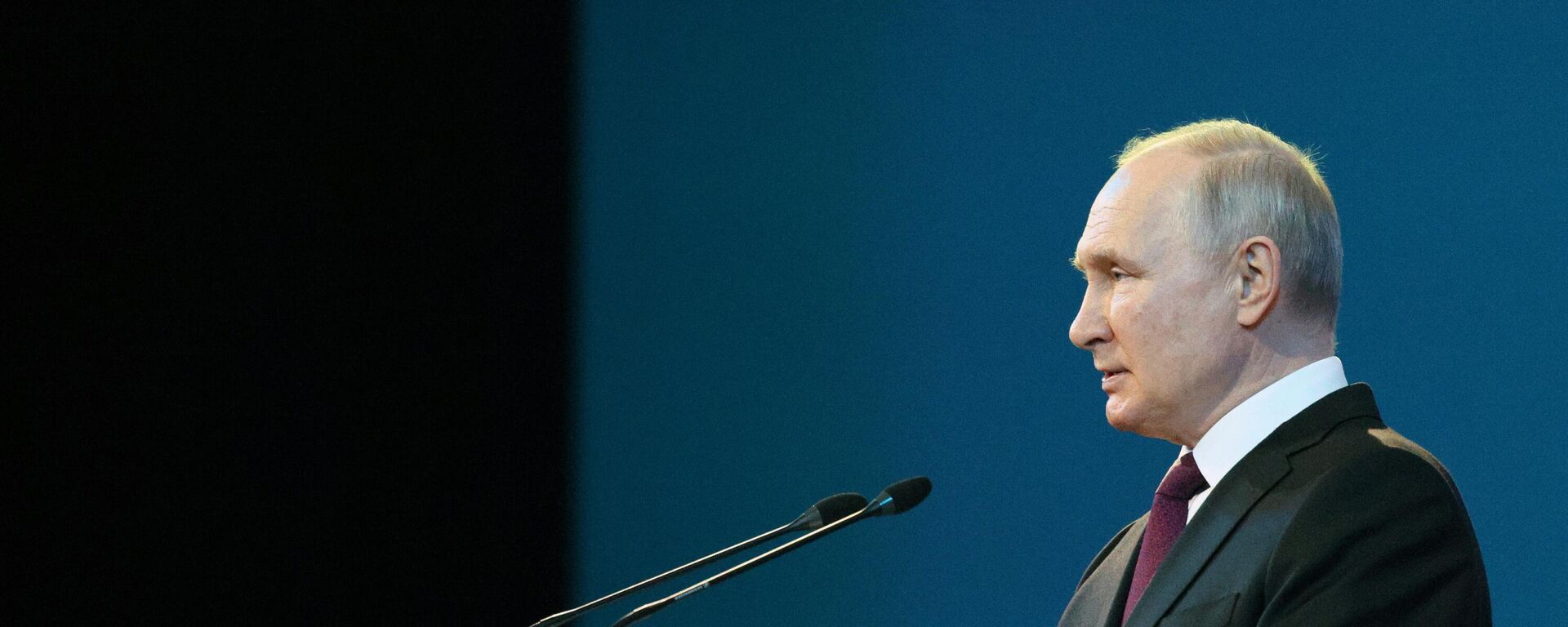https://sputnikglobe.com/20230529/what-is-the-cfe-treaty-and-why-has-russia-renounced-it-1110776394.html
What is the CFE Treaty and Why Has Russia Renounced It?
What is the CFE Treaty and Why Has Russia Renounced It?
Sputnik International
The past five years have seen an acceleration in the breakdown of the post-Cold War order, with a number of security agreements revoked, and NATO continuing its push toward Russia’s borders. The Conventional Armed Forces in Europe (CFE) Treaty is the latest agreement on the chopping block. What is it? And why has Russia decided to abrogate it?
2023-05-29T15:29+0000
2023-05-29T15:29+0000
2023-05-29T20:13+0000
vladimir putin
mikhail gorbachev
russia
moscow
washington
nato
warsaw pact
russian foreign ministry
treaty on conventional armed forces in europe (cfe)
us
https://cdn1.img.sputnikglobe.com/img/105681/58/1056815838_0:157:3083:1891_1920x0_80_0_0_f613aaad4258cc92e9cd1b2dc978c5c3.jpg
Russian President Vladimir Putin signed a decree on Monday officially denouncing the CFE Treaty.The Kremlin assured that the move, which comes more than 16 years after Russia first suspended its participation in the arms limitation agreement with NATO, would have no “direct consequences” for Moscow, because the CFE had already been turned into a corpse of a treaty, and by no fault of Russia.What Was the CFE Treaty’s Purpose?Signed in Paris in November 1990 by 16 NATO and six Warsaw Pact countries, the Treaty on Conventional Armed Forces in Europe was designed to set quantitative limits on five basic types of conventional weapons (tanks, armored combat vehicles, artillery, attack helicopters and combat aircraft). The treaty was signed to help further limit tensions between NATO and the Warsaw Pact amid warming ties between Moscow and Washington under Mikhail Gorbachev.By the time the treaty stepped into force in November 1992, the Warsaw Pact had disbanded, the Soviet Union collapsed, and NATO’s reason for being – ‘protecting the world from Soviet communism’, disappeared. Nevertheless, Russia and seven other former Soviet republics including Belarus, Ukraine, Armenia, Azerbaijan, Georgia, Kazakhstan and Moldova ratified the agreement.What Are the Terms of the CFE Treaty?The CFE Treaty’s provisions allowed NATO and the Warsaw Pact members to maintain equal numbers of conventional weapons systems in a geographic area stretching from the Atlantic coast in the west to the Ural Mountains in the east. This included maximums for each bloc of 40,000 main battle tanks, 60,000 armored combat vehicles, 40,000 pieces of artillery, 13,600 combat aircraft and 4,000 attack helicopters. The agreement also had further restrictions on forces outside the treaty zone, and set limits on the number of “active units” among these forces, plus limits on the numbers of tank bridgelayers, training aircraft, and transport helicopters bloc countries could deploy.With the Eastern Bloc’s dissolution and the selloff and scrapping of thousands of pieces of military equipment by CFE Treaty members through the 1990s and much of the 2000s, these numerical restrictions seemingly became a moot point. However, the expansion of NATO, and the alliance’s growing hostility toward common security initiatives proposed by Moscow, would soon prove an irreconcilable bone of contention.Why Did Russia Suspend Its Participation in the CFE?In July 2007, Moscow suspended the implementation of the CFE Treaty, citing NATO’s failure to ratify a 1999 adaptation of the agreement, which proposed a system of national and territorial limits in place of bloc-based limitations, and other measures to build trust and reduce tensions.President Putin protested that instead of proceeding with the reduction of armaments “by deeds, not words,” NATO had decided to engage in a new buildup of armaments in Europe.Russia indefinitely halted participation in the CFE in 2015, accusing NATO of bypassing its provisions through the bloc's ceaseless eastward expansion.After withdrawing from the CFE, the Russian Foreign Ministry signaled readiness for talks on a new agreement on conventional arms in Europe. NATO ignored the proposal, but in 2016, amid rising tensions over the Ukrainian crisis, the foreign ministers of fourteen European states, including Germany, France and Italy, proposed the “re-launch of conventional arms control” with Russia to ensure “effective cooperative security allowing for peace and stability on our continent.”The proposal ultimately came to naught, with a distrustful Moscow complaining about NATO’s posture of “coercive containment” of Russia and the rebalancing of power in the region in the alliance’s favor. Washington, meanwhile, accused Russia of violating “core principles of international law,” signaling refusal to entertain a new conventional arms control deal.The CFE Treaty is the latest Cold War agreement to be scrapped amid rising Russia-NATO tensions. Earlier this year, President Putin suspended Russia’s participation in the New Strategic Arms Reduction Treaty (New START) – which is now the last major strategic arms treaty between the nuclear superpowers after the US’s unilateral withdrawal from the Intermediate-Range Nuclear Forces Treaty in 2019. In 2020, the US pulled out of the Treaty on Open Skies, a 1992 agreement which allowed party states to conduct pre-agreed upon aerial surveillance flights to build trust.But the first inklings of the collapse of the post-1991 security order can be traced back to 2002, when Washington scrapped the Anti-Ballistic Missile Treaty – which restricted the number and types of anti-missile defense systems the nuclear superpowers could create and field. This decision prompted Moscow to dust off Soviet-era research into hypersonic missiles, with Moscow subsequently successfully fielding several hypersonic weapons capable of defeating any existing or prospective missile defenses, thus managing to preserve the global strategic balance.
https://sputnikglobe.com/20230529/putin-signs-law-on-cfe-treaty-denunciation-1110765391.html
https://sputnikglobe.com/20230320/a-fateful-error-history-of-natos-expansion-1108611973.html
https://sputnikglobe.com/20220128/us-systematically-removed-trust-transparency-safeguards-preventing-nuclear-war-ignores-remainder-1092595388.html
russia
moscow
washington
Sputnik International
feedback@sputniknews.com
+74956456601
MIA „Rossiya Segodnya“
2023
News
en_EN
Sputnik International
feedback@sputniknews.com
+74956456601
MIA „Rossiya Segodnya“
Sputnik International
feedback@sputniknews.com
+74956456601
MIA „Rossiya Segodnya“
cfe treaty, conventional armed forces in europe treaty, tanks, armored vehicles, aircraft, helicopters, limitations, limits, troop limitations, forces, military equipment
cfe treaty, conventional armed forces in europe treaty, tanks, armored vehicles, aircraft, helicopters, limitations, limits, troop limitations, forces, military equipment
What is the CFE Treaty and Why Has Russia Renounced It?
15:29 GMT 29.05.2023 (Updated: 20:13 GMT 29.05.2023) The past five years have seen an acceleration in the breakdown of the post-Cold War order, with a number of security agreements revoked, and NATO continuing its push toward Russia’s borders. The Conventional Armed Forces in Europe (CFE) Treaty is the latest agreement on the chopping block. What is it? And why has Russia decided to abrogate it?
Russian President Vladimir Putin
signed a decree on Monday officially denouncing the CFE Treaty.
The Kremlin assured that the move, which comes more than 16 years after Russia first suspended its participation in the arms limitation agreement with NATO, would have no “direct consequences” for Moscow, because the CFE had already been turned into a corpse of a treaty, and by no fault of Russia.
What Was the CFE Treaty’s Purpose?
Signed in Paris in November 1990 by 16 NATO and six Warsaw Pact countries, the
Treaty on Conventional Armed Forces in Europe was designed to set quantitative limits on five basic types of conventional weapons (tanks, armored combat vehicles, artillery, attack helicopters and combat aircraft). The treaty was signed to help further limit tensions between NATO and the Warsaw Pact amid warming ties between Moscow and Washington under Mikhail Gorbachev.
By the time the treaty stepped into force in November 1992, the Warsaw Pact had disbanded, the Soviet Union collapsed, and NATO’s reason for being – ‘protecting the world from Soviet communism’, disappeared. Nevertheless, Russia and seven other former Soviet republics including Belarus, Ukraine, Armenia, Azerbaijan, Georgia, Kazakhstan and Moldova ratified the agreement.
What Are the Terms of the CFE Treaty?
The CFE Treaty’s provisions allowed NATO and the Warsaw Pact members to maintain equal numbers of conventional weapons systems in a geographic area stretching from the Atlantic coast in the west to the Ural Mountains in the east. This included maximums for each bloc of 40,000 main battle tanks, 60,000 armored combat vehicles, 40,000 pieces of artillery, 13,600 combat aircraft and 4,000 attack helicopters. The agreement also had further restrictions on forces outside the treaty zone, and set limits on the number of “active units” among these forces, plus limits on the numbers of tank bridgelayers, training aircraft, and transport helicopters bloc countries could deploy.
With the Eastern Bloc’s dissolution and the selloff and scrapping of thousands of pieces of military equipment by CFE Treaty members through the 1990s and much of the 2000s, these numerical restrictions seemingly became a moot point. However, the expansion of NATO, and the alliance’s growing hostility toward common security initiatives proposed by Moscow, would soon prove an irreconcilable bone of contention.
Why Did Russia Suspend Its Participation in the CFE?
In July 2007, Moscow
suspended the implementation of the CFE Treaty, citing NATO’s failure to ratify a 1999 adaptation of the agreement, which proposed a system of national and territorial limits in place of bloc-based limitations, and other measures to build trust and reduce tensions.
“The treaty, signed at the time of the Cold War, has ceased to correspond to modern European realities and to meet our security interests,” the Russian Foreign Ministry said at the time in a statement explaining Moscow’s move. “Furthermore, [NATO members] have taken a number of steps that are incompatible with the spirit and the letter of the treaty,” the Ministry added.
President Putin protested that instead of proceeding with the reduction of armaments “by deeds, not words,” NATO had decided to engage in a new buildup of armaments in Europe.
Russia indefinitely halted participation in the CFE in 2015,
accusing NATO of bypassing its provisions through the bloc's ceaseless eastward expansion.
After withdrawing from the CFE, the Russian Foreign Ministry
signaled readiness for talks on a new agreement on conventional arms in Europe. NATO ignored the proposal, but in 2016, amid rising tensions over the Ukrainian crisis, the foreign ministers of fourteen European states, including Germany, France and Italy,
proposed the “re-launch of conventional arms control” with Russia to ensure “effective cooperative security allowing for peace and stability on our continent.”
The proposal ultimately came to naught, with a distrustful Moscow
complaining about NATO’s posture of “coercive containment” of Russia and the rebalancing of power in the region in the alliance’s favor. Washington, meanwhile, accused Russia of violating “core principles of international law,” signaling refusal to entertain a new conventional arms control deal.
The CFE Treaty is the latest Cold War agreement to be scrapped amid rising Russia-NATO tensions. Earlier this year, President Putin suspended Russia’s participation in the New Strategic Arms Reduction Treaty (New START) – which is now the last major strategic arms treaty between the nuclear superpowers after the US’s unilateral withdrawal from the Intermediate-Range Nuclear Forces Treaty in 2019. In 2020, the US pulled out of the Treaty on Open Skies, a 1992 agreement which allowed party states to conduct pre-agreed upon aerial surveillance flights to build trust.

28 January 2022, 23:33 GMT
But the first inklings of the collapse of the post-1991 security order can be traced back to 2002, when Washington scrapped the Anti-Ballistic Missile Treaty – which restricted the number and types of anti-missile defense systems the nuclear superpowers could create and field. This decision prompted Moscow to dust off Soviet-era research into hypersonic missiles, with Moscow subsequently successfully fielding several hypersonic weapons capable of defeating any existing or prospective missile defenses, thus managing to preserve the
global strategic balance.





